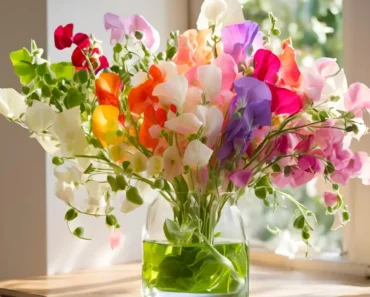9 quick fixes to get five healthy snake plant pups in 2025
Who This Helps
- U.S. apartment dwellers with north or east windows
- Beginners who want reliable offsets to share
- Collectors who want variegation to stay true
- Busy owners who water less in winter
Who Should Skip
- If you want blooms (rare indoors) instead of pups
- If you grow outdoors year‑round in Zone 10b+
- If you don’t plan to repot or add a small LED
Offsets appear when light intensity, pot fit, and rhizome air flow are dialed in.
The Case: Why Your Snake Plant Isn’t Making Pups in 2025
We audited a four‑year‑old Dracaena (Sansevieria) trifasciata in a Minneapolis apartment, eight feet from a north window. Healthy leaves, zero offsets for two years.
Objective
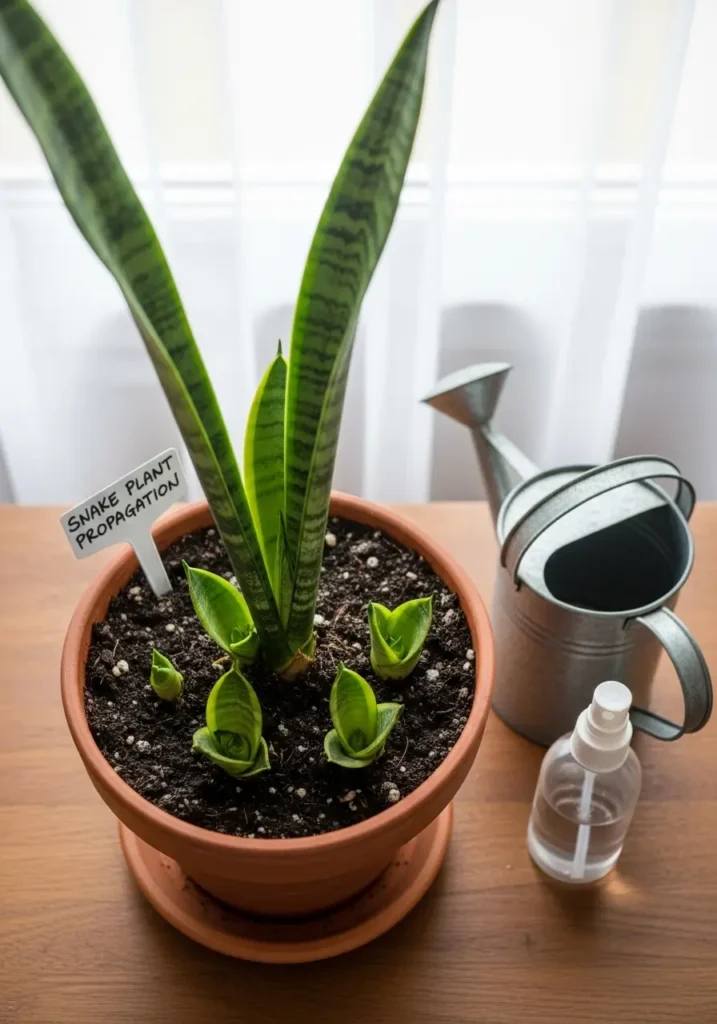
- 2+ snake plant pups within 12–16 weeks
- Repeatable routine for ongoing offsets
- Minimal new gear; renter‑friendly
Constraints
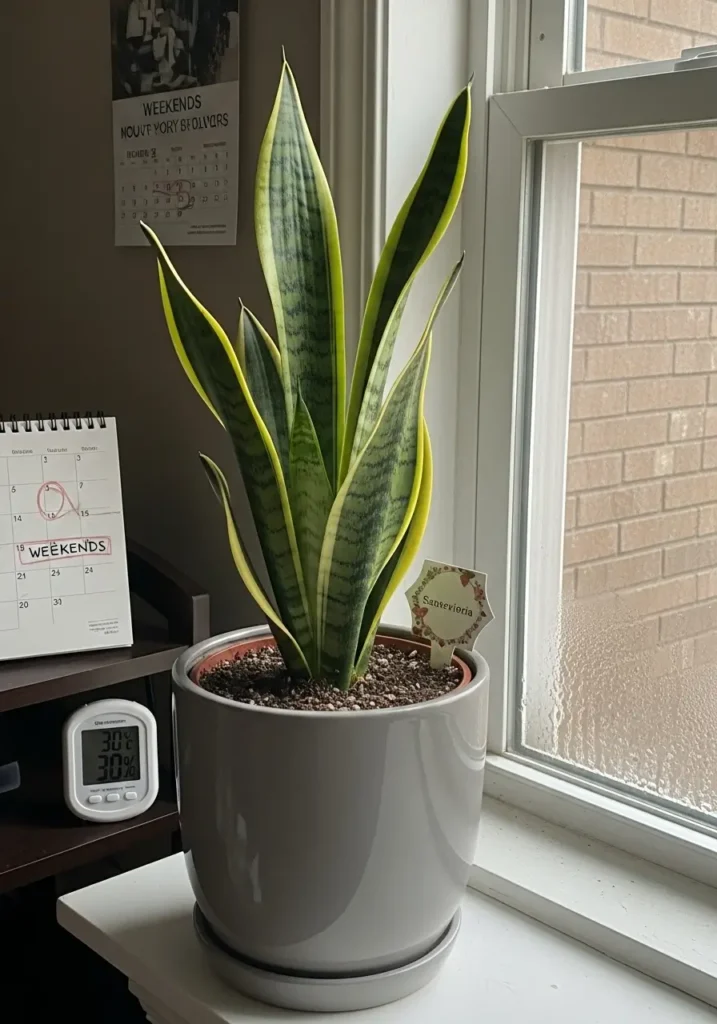
- Cachepot aesthetic (hidden nursery pot)
- Dry winter air and cool window area
- Travel two weekends/month
Industry anecdote: I was hired to troubleshoot a Boston lobby lined with perfect Sansevieria. After a year, not one pup. The planters were 14 inches wide with dense peat soil. Rhizomes lacked air and space cues. We downsized pots, added a gritty mix, and nudged light with LED bars. Pups appeared in under three months—basic changes did the heavy lifting.
9 Reasons Your Snake Plant Never Produces Pups—and How to Test Each
Use these quick checks at home. Keep notes. Small changes stack fast.
1) Light is too low for offsets
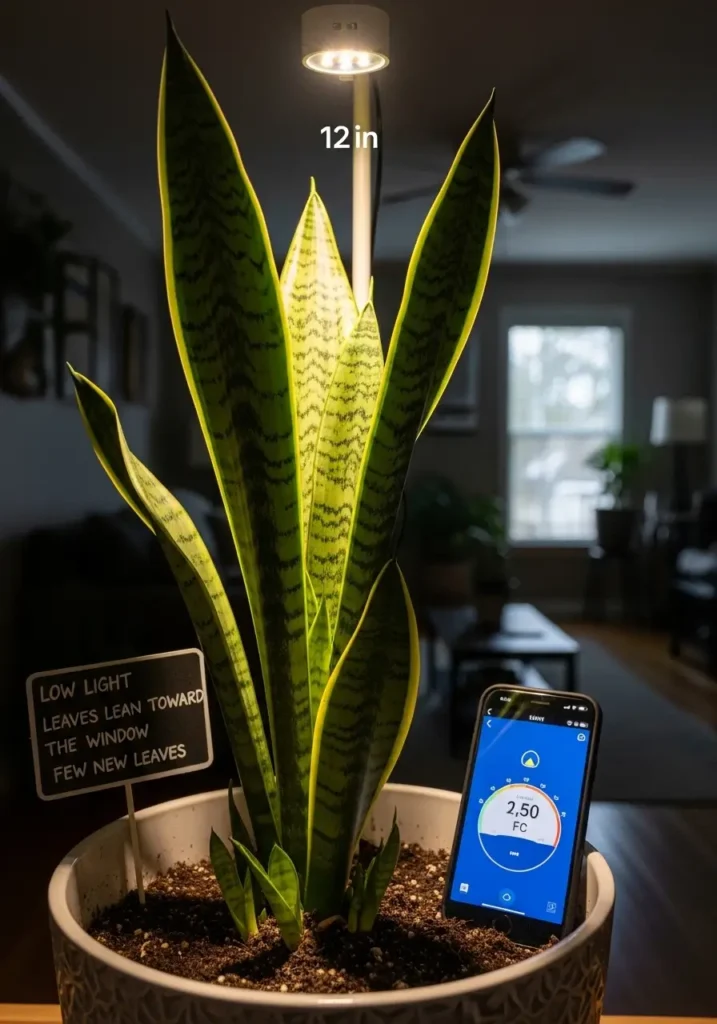
Low light keeps snake plants alive, but pups need extra energy. Aim for 800–1,500 foot‑candles for 10–12 hours in spring and summer.
- Quick check: a phone light app at pot rim mid‑day
- Target: 1,000 fc under a small LED, 12 inches above
- Sign: leaves lean toward the window; few new leaves
2) Pot is oversized
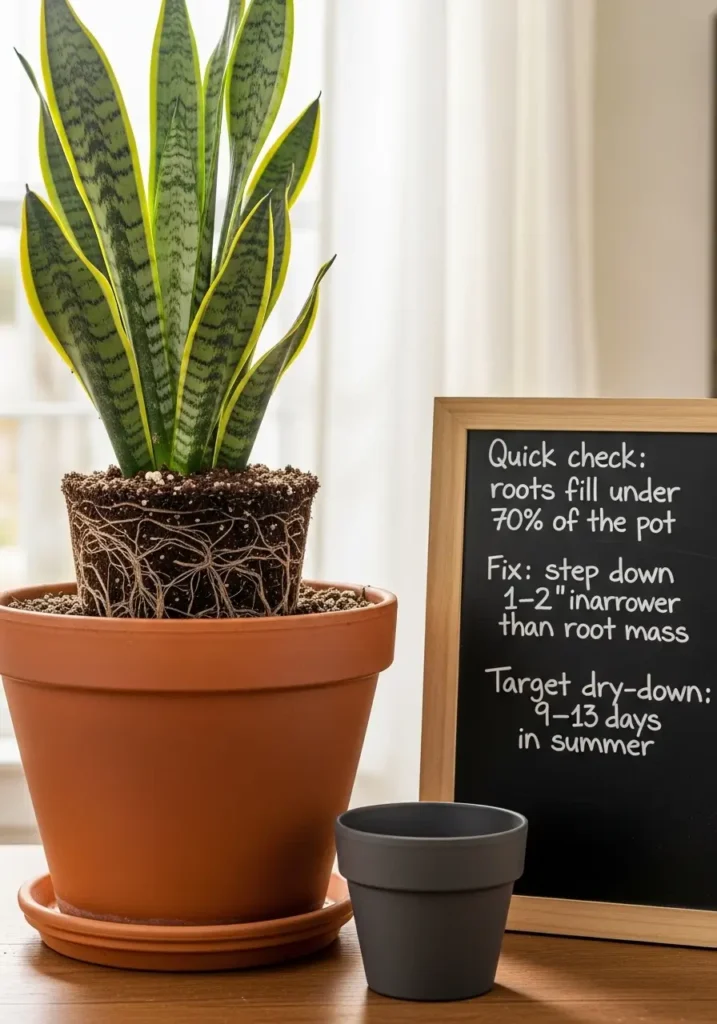
Roomy media delays offsets and dries slowly. A snug fit nudges rhizomes to branch and send pups.
- Quick check: roots fill under 70% of the pot
- Fix: step down 1–2 inches narrower than root mass
- Target dry‑down: 9–13 days in summer
3) Soil lacks air flow
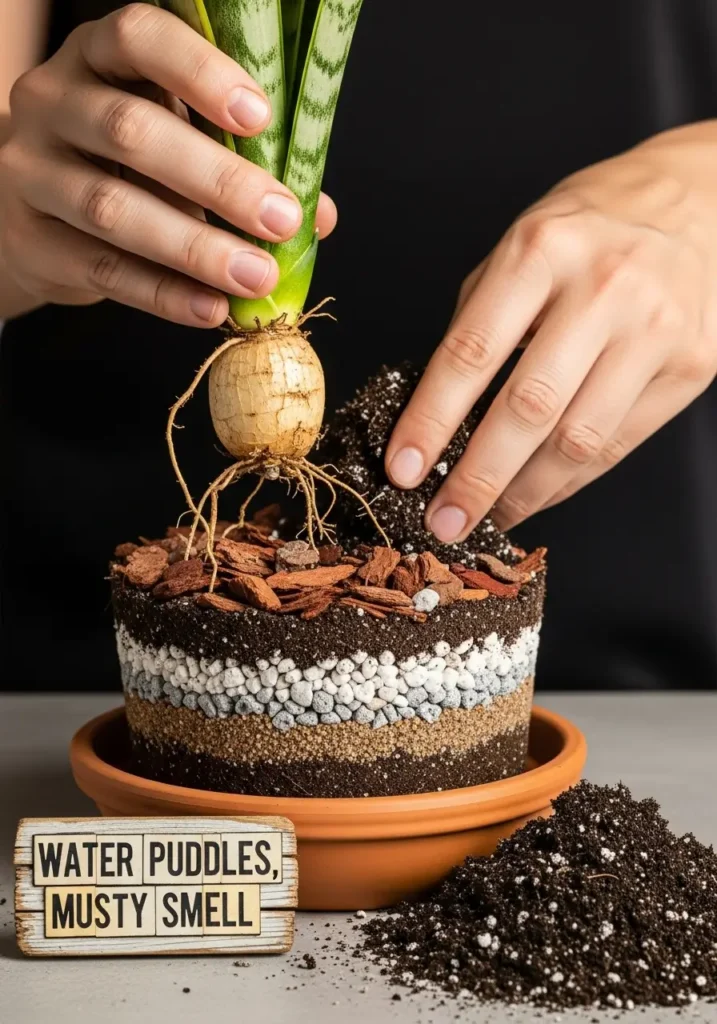
Dense peat compacts and starves rhizomes of oxygen. Add chunky parts for air and quicker drying to protect rhizome health.
- Recipe: 40% potting soil, 30% pumice/perlite, 20% bark, 10% coarse sand
- Sign: water puddles, musty smell
- Goal: firm, pale rhizomes with no mush
4) Watering is too frequent in winter
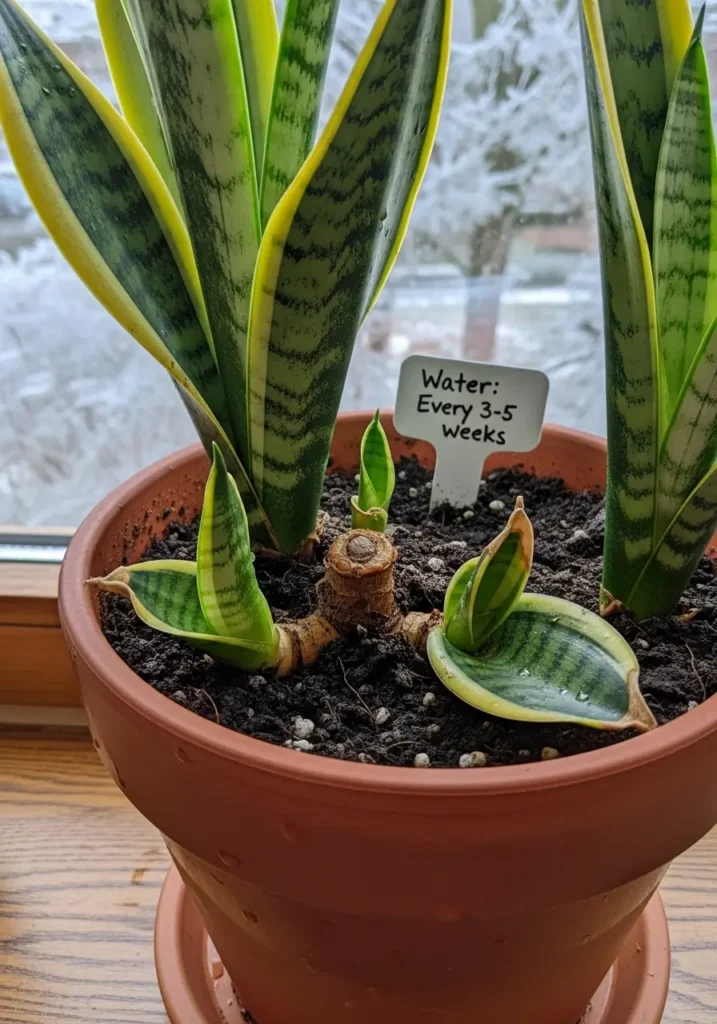
Cold, damp media slows growth and invites rot. In winter, stretch intervals.
- Quick check: lift the pot; water when light in weight
- Winter cadence: every 3–5 weeks
- Sign: tip burn plus soft rhizome = stress
5) Fertilizer rate is too high
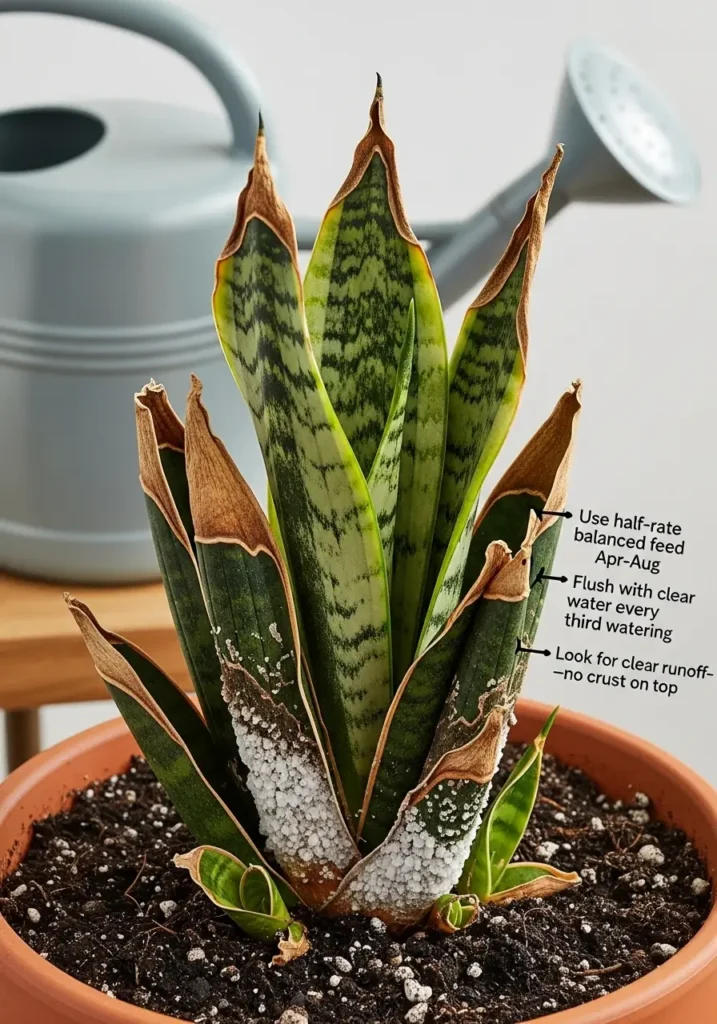
Heavy salts collect in tight mixes. That burns tips and slows roots.
- Use half‑rate balanced feed Apr–Aug
- Flush with clear water every third watering
- Look for clear runoff—no crust on top
6) Light hours are too short
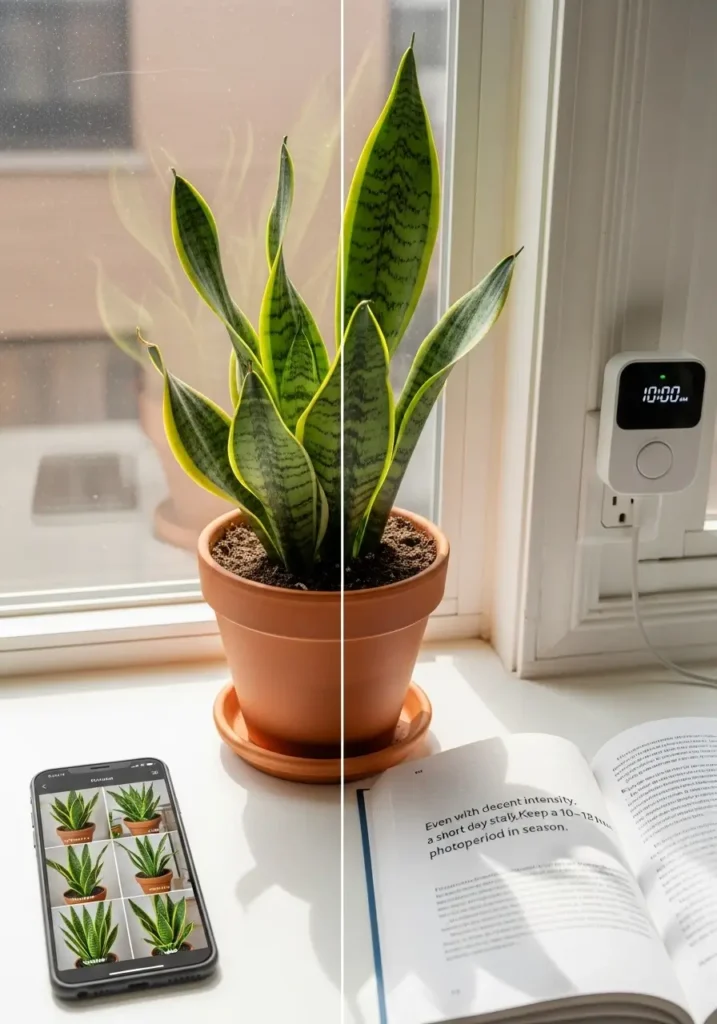
Even with decent intensity, a short day stalls energy. Keep a 10–12 hour photoperiod in season.
- Smart plug timers make it automatic
- Track week‑to‑week photos for growth
7) Media temperature dips below 65°F

Cool roots slow to a crawl. A $10–$15 probe at soil level helps.
- Target: 65–75°F at the root zone
- Move 12–18 inches from cold glass in winter
8) Seasonal expectations are off
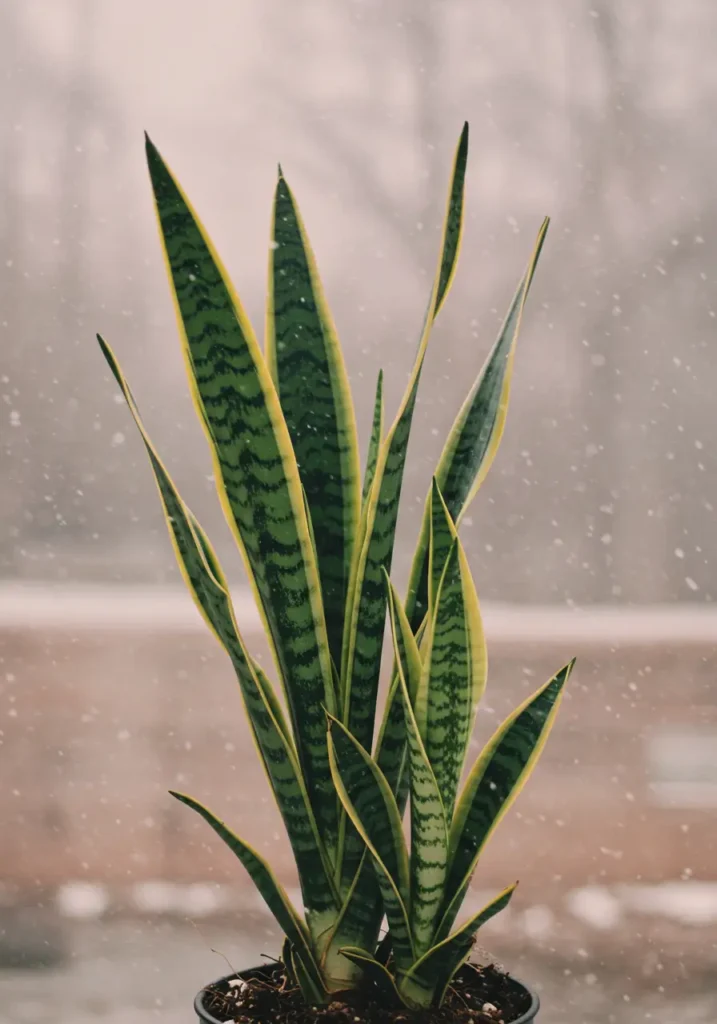
Pups favor spring and summer. Don’t expect miracles in January.
- Push: March–September with light and warmth
- Glide: rest in winter with longer intervals
9) Cultivar genetics are slow
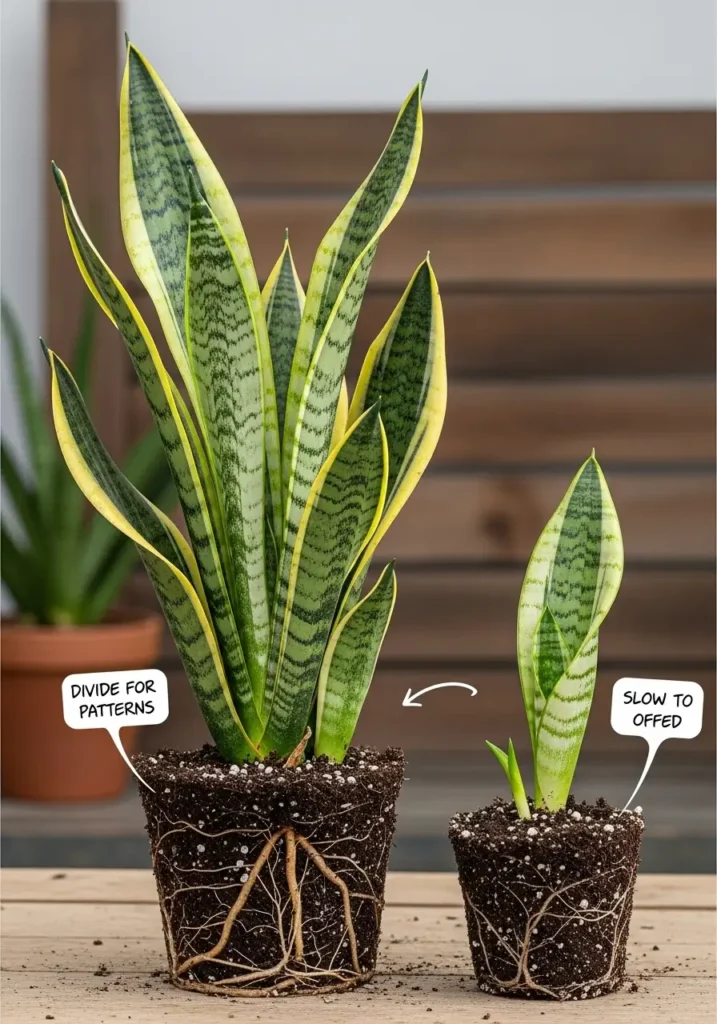
Some variegates and Sansevieria masoniana offset slowly. Leaf cuttings can lose variegation.
- Divide to keep patterns
- Use leaf cuttings if speed isn’t critical
From experience, light intensity and pot size do most of the work. In my view, upgrading light first gives the fastest payback.
Related Post: 12 Smart Low-Maintenance Backyard Ideas for Effortless Outdoor Living
Fixes That Worked: Step-by-Step, with Timelines and Metrics
Step 1 — Measure and boost light (snake plant pups timeline starts here)
We added a clip‑on LED at 1,000–1,200 fc for 12 hours/day on a smart plug. Distance: 12 inches above leaves, slightly angled.
- Timeline: leaves perk week 1–2; pup swell near week 6–8; visible pups week 8–12
Step 2 — Right‑size the pot and refresh the mix
We moved into a 7.5‑inch nursery pot that slid into the same cachepot. New mix followed the 40/30/20/10 recipe to improve rhizome health and drainage.
- Dry‑down: 9–12 days in summer
- Winter: 3–5 weeks between waterings
- Rhizomes: firm, pale, no smell
Step 3 — Gentle feeding and regular flushes
We used a half‑rate 3‑1‑2 liquid every 4–6 weeks Apr–Aug. Every third watering, we flushed until runoff ran clear.
- Tip burn: none after month two
- Leaves: steady new growth in season
Results You Can Expect
- Weeks 0–4: Better posture and color. No snake plant pups yet. Media dries predictably.
- Week 9: First pup at soil line, about half an inch tall.
- Week 14: Three pups total. Largest 3 inches; mother plant adds new leaves.
- Week 22: Five pups. Wait to divide until each has two leaves.
2025 note: Phone light apps improved a lot. Cross‑check with a basic meter if you can. Today’s 10–15W clip lights often hit 1,000 fc at 12 inches.
Snug pot and airy mix help rhizomes branch and send pups.
For deeper guidance, see Clemson’s Sansevieria care and propagation and NC State Extension’s Dracaena trifasciata profile.
Propagation Choices When Pups Are Slow
If you’re impatient or working with slow genetics, choose between division and leaf cuttings. Here’s how they compare.
| Criterion | Option A: Divide rhizomes | Option B: Leaf cuttings |
|---|---|---|
| What it means | Division is faster when you have offsets | If mother is weak, use cuttings |
| Time to plant | 2–8 weeks to establish | 8–16+ weeks to root, months to bulk |
| Keeps variegation | Yes, clonal match | Often reverts to green |
| Stress to mother plant | Moderate; remove a section | Low; plant stays intact |
| Tools/skill | Clean knife, steady hand | Clean shears, patience |
| Success rate | High with firm rhizomes | Moderate; rot risk in heavy media |
Pick division when you already see pups or thick rhizomes you can split. Go with leaf cuttings if you want to multiply plants while you improve conditions. If you grow a prized variegate, division is the safer bet.
Common Mistakes + Checklist
Mistakes and fixes
- Mistake: Treating a tolerant snake plant as indestructible. Fix: Track light and pot fit for one season.
- Mistake: Overwatering after repot. Fix: Use pot weight and a 9–13 day summer target.
- Mistake: Skipping flushes. Fix: Rinse salts every third watering.
- Mistake: Cold window ledge. Fix: Move 12–18 inches from glass in winter.
- Mistake: Expecting pups in winter. Fix: Push March–September.
Quick checklist to hit the ground running
- Light: 800–1,500 fc for 10–12 hours in season
- Pot: 1–2 inches wider than root mass; snug fit
- Mix: 40/30/20/10 soil‑pumice‑bark‑sand recipe
- Water: by weight; winter every 3–5 weeks
- Feed: half‑rate Apr–Aug; flush every third time
Snake plant pup timeline—signs you’re on track
- Week 2: stronger leaf stance
- Week 6: firm bumps at soil line
- Week 9–12: first offsets appear
- Month 5+: ready to divide
Sanity check: If soil stays wet more than 14 days in summer or media smells sour, repot into the airy recipe above. That protects rhizome health and future offsets.
Wrap‑up and Next Steps
The biggest wins came from better light, a snug pot, and airy soil. Stack those with gentle feeding and seasonal timing, and snake plant pups usually show within 8–12 weeks in the growing season.
Your move is simple: measure light, repot if the pot is roomy, and set a 12‑hour timer. After that, the ball is in your court—stay consistent for one season and enjoy new offsets.
FAQs
What pot size encourages snake plant offsets?
Pick a pot only 1–2 inches wider than the root mass. This keeps roots active and soil drying on schedule.
What soil mix is best for Sansevieria pups?
Use a breathable mix: 40% potting soil, 30% pumice or perlite, 20% orchid bark, 10% coarse sand. It guards rhizome health.
Why did my variegated snake plant lose stripes after propagation?
Leaf cuttings often revert to green. Divide rhizomes to keep variegation true.
How long before I see pups after fixing care?
Expect the first offsets in 8–12 weeks during the growing season, then more by month five if conditions stay steady.
This Post Contains Affiliate Links








